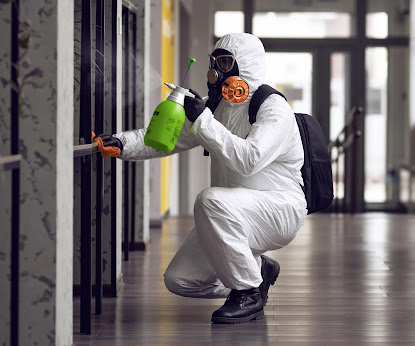What Are the Common Signs That Indicate a Need for Commercial Mould Inspection?
Mould growth is a serious concern for commercial properties, affecting both the structural integrity of the building and the health of its occupants. A commercial mould inspection is vital to identifying and addressing mould issues early on. There are several common signs that indicate the need for a professional commercial mould inspection to ensure your property remains safe and healthy.
1. Visible Mould Growth
One of the most obvious signs that you need a commercial mould inspection is the presence of visible mould. Mould can appear in various colors, including black, green, or white, and is commonly found in damp, dark areas such as basements, bathrooms, or behind walls. If you notice mould growing on walls, ceilings, or furniture, it’s time to schedule a commercial mould inspection to assess the extent of the problem.
2. Musty Odor
A persistent musty or earthy odor is often a telltale sign of mould growth, even if you can’t see it. This smell is caused by the release of spores and volatile organic compounds (VOCs) from the mould. If your commercial property has a musty scent, it’s crucial to schedule a commercial mould inspection to determine the source of the odor and take appropriate action to address the issue.
3. Water Damage or Leaks
Water damage is a primary contributor to mould growth. If your commercial building has experienced flooding, leaks, or high humidity levels, there is an increased risk of mould formation. Signs of water damage, such as peeling paint, water stains, or warped flooring, are strong indicators that a commercial mould inspection is necessary. Identifying hidden mould growth early on will prevent further damage to your property.
4. Increased Allergies or Respiratory Issues
If employees or tenants begin experiencing increased respiratory problems, such as coughing, wheezing, or nasal congestion, it may be due to the presence of mould in the building. Mould spores can trigger allergic reactions and worsen asthma or other respiratory conditions. If you notice a spike in health complaints, a Commercial Mould Inspection should be conducted to rule out mould as the cause and to ensure the air quality remains safe.
5. High Humidity Levels
Excess moisture in the air can encourage mould growth. If you notice that your commercial building has consistently high humidity levels, especially in areas such as bathrooms, kitchens, or basements, this could be a precursor to mould issues. A commercial mould inspection can help identify hidden mould that may be growing in areas with high humidity, ensuring that the problem is addressed before it becomes widespread.
6. Cracking or Bubbling Paint
When mould grows behind walls or ceilings, it can cause damage to the paint, resulting in cracking, bubbling, or peeling. This can be a clear indicator that moisture is present and that mould may be growing within the structure. If you notice these signs, it’s essential to schedule a commercial mould inspection to check for any hidden mould damage and take corrective measures before it worsens.
Conclusion
Recognizing the signs that indicate a need for a commercial mould inspection is the first step toward ensuring a safe and healthy environment in your commercial property. Visible mould growth, musty odors, water damage, increased health issues, high humidity, and damage to paint or walls are all common indicators that require professional attention. Early detection and prompt action can prevent costly repairs and health risks, making a commercial mould inspection an essential step in maintaining your property’s integrity.

.jpg)


Comments
Post a Comment